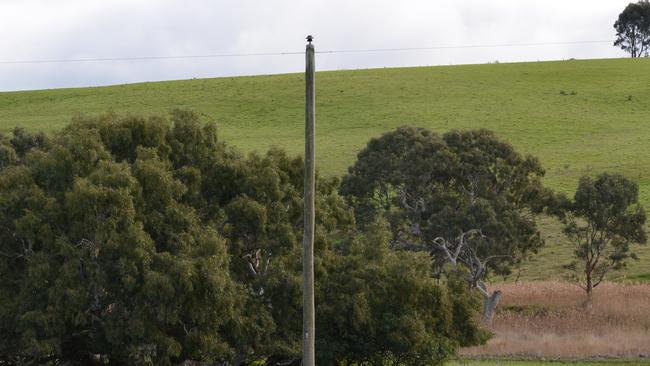Powerline fire faults: Safety solution ignored
A new technology exists to identify up to 120 powerline faults that pose an immediate fire risk in Victoria, but distributors are refusing to roll it out.

Victoria’s 30,000km of ageing rural single-wire earth return powerlines have an estimated 85-120 serious defects that “pose an immediate fire risk”, according to an explosive report that has sparked memories of the deadly Black Saturday fires.
IND Technology, in collaboration with SWER network owners Powercor, AusNet and the Victorian Government, spent the past six months scanning 1000km of lines across 67 sub-networks using electrical fault detectors that found a whopping34 anomalies on 23 networks.
Of the 34 powerline anomalies detected by EFD, 13 were inspected and two major fire risks were found – one a detached conductor and the other an intermittent tree contact. The other 21 lines are yet to be visited.
IND.T chairman and Monash University professor Tony Marxsen said the detached conductor on the Glenthompson South SWER network was similar to the fault that sparked Black Saturday’s Coleraine fire.
He said the technology could also pick up broken tie-wires, detached conductors, contact with vegetation, failing and broken insulators, failing splices, loose clamps and broken conductor strands, all of which posed fire risks.
It was a broken conductor that the 2009 Victorian Bushfires Royal Commission found sparked the Kilmore East fire that killed 119 people, caused 232 casualties and destroyed 1242 homes.

Terang dairy farmer Simon Craven, who has campaigned for the past five years on powerline bushfire safety, said: “There’s some really alarming numbers in the (IND.T) report and both networks need some serious work.”
In a LinkedIn post pleading for action, Mr Craven said: “I’ve been questioning why this (EFD) technology continues to just be a trial for a long time now.
“A question I now ask (is) what side of history do you want to be on? The side of history that knew and did nothing or the one who knew and lead by making real change?”
The IND.T report found “SWER powerlines had an average of one anomaly per thirty powerline-kilometres in six months” and about three to four serious defects that pose a major fire risk every 1000km.
Professor Marxsen said after five years’ of research and field trials the EFD technology was ready to roll out, with manufacturing runs already underway to meet US and Canadian power companies’ orders.
But neither PowerCor nor AusNet support a roll out in Victoria, with both arguing more work needs to be done on the EFD technology in Australia.
“We recognise that this technology has been reported as successful in the USA, however their network is very different to ours,” an AusNet spokeswoman said.
“For example, they do not have REFCL (Rapid Earth Fault Current Limiter) technology installed, and their network is not in as good a position as ours, which is a result of our investment in maintenance and replacement programs over many years.”
However Professor Marxsen said EFD had already been installed on US networks with REFCL and worked.
A Powercor spokesman said: “We are supportive of this type of technology and have trialled it across parts of central and western Victoria.
“(But) while this technology is promising, we are still testing and analysing how effective it is. We need to make sure these devices are accurately detecting faults and that our network is set up to support a broader rollout so we are delivering for our communities.”
Victoria’s Electricity Safety Act states “a major electricity company must design, construct, operate, maintain and decommission its supply network to minimise as far as practicable the bushfire danger arising from the supply network”.
IND.T’s 2022 report on EFD puts the cost of installing the technology across the entire SWER network at $30 million, equating to 7500 units at $3000 each, plus $1000 for installation, plus an annual $6 million service fee.
The Victorian government, distributors and electricity customers have already spent about $1 billion REFCLs at substations servicing 22,000kV lines, plus even more on some limited insulation and undergrounding of lines.

EFD technology was first developed in 2011 by RMIT professor of electrical engineering Alan Wong, using EFD scanners that listens for radio signals from the lines that indicate a fault.
A healthy line is silent, while one with a defect produces a signal the EFD can decipher from background noise using edge computing, machine learning and signature recognition.
The scanners, which are GPS linked, are installed at the end of SWER lines, adjacent to transformers, allowing IND.T to not only listen to lines, but triangulate to detect the location of defects.




